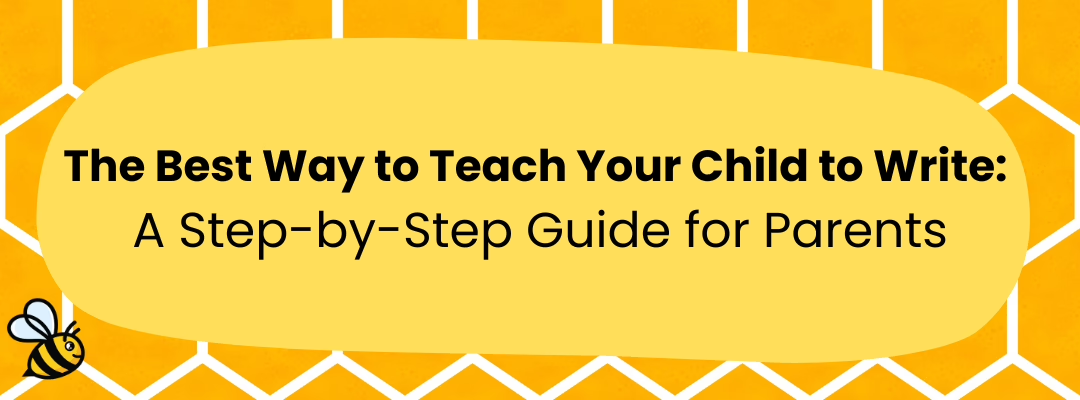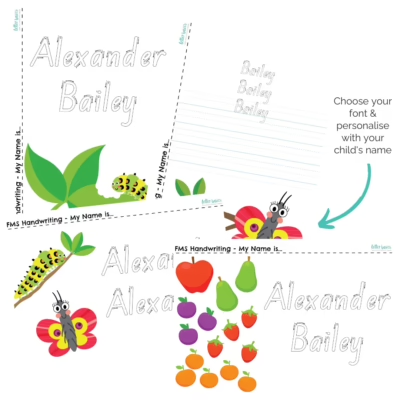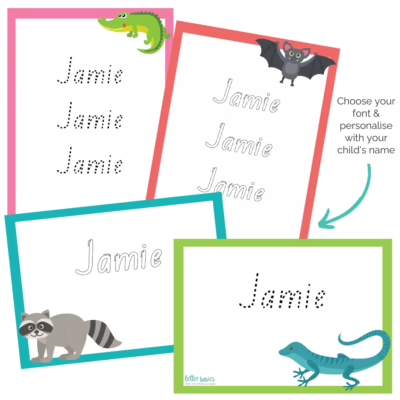Learning to write is a major milestone in your child’s early years.
It’s more than just holding a pencil—it’s about building the motor skills, confidence, and understanding needed to express thoughts on paper.
As a parent, you play a key role in this journey.
The good news is that you don’t need to be a teacher to help your child develop strong writing skills—you just need the right strategies, a bit of patience, and lots of encouragement.
Here’s a step-by-step guide to help you support your child as they learn to write.
The Best Way to Teach Your Child to Write
Learning to write is a journey that starts well before pencil meets paper.
By supporting your child’s fine motor development, bilateral coordination, and ability to cross the midline, you’re laying the physical groundwork for strong writing skills.
Add in a little routine, purpose, and lots of encouragement—and you’ll be amazed at how your child grows as a confident writer.
1. Build Fine Motor Skills First
Before your child can write letters, they need strong hand and finger muscles.
Fine motor skill development is an essential foundation for writing.
Try these fun activities at home:
- Squishing and rolling playdough
- Threading beads or pasta onto string
- Cutting with child-safe scissors
- Using tongs or tweezers to pick up small items
- Drawing freely with crayons, markers, or chalk
These playful tasks help build the strength and control needed for holding a pencil and forming letters.
2. Support Bilateral Coordination and Midline Crossing
Writing doesn’t just happen in the fingers—it’s a whole-body task.
Two key gross motor skills that support early writing development are bilateral coordination and crossing the midline.
Bilateral coordination is the ability to use both sides of the body together in a controlled way.
When your child writes, one hand needs to move the pencil while the other hand stabilises the paper.
Children who haven’t developed this skill yet may switch hands frequently or struggle to keep the paper steady.
Crossing the midline means reaching across the centre of the body with one hand to the opposite side.
This is important when writing from left to right across a page.
Children who find this challenging may avoid using one hand consistently or have difficulty with smooth, continuous writing motions.
You can encourage these skills through activities such as:
- Crawling, yoga poses, and animal walks
- Drawing big shapes in the air with both hands
- Playing catch or doing “Simon Says” with cross-body movements
- Tracing large rainbows or horizontal lines across a whiteboard
Building these foundational movement skills makes the act of writing feel more natural and coordinated for your child.
3. Teach Pencil Grip and Posture
Good habits start early!
Show your child how to hold a pencil with a tripod grip—using the thumb and first two fingers.
Short pencils or crayons work well for encouraging the correct grip naturally.
Help your child sit in the right position too:
- Feet flat on the floor
- Back straight
- Non-writing hand steadying the paper
These small adjustments make writing more comfortable and successful.
4. Introduce Pre-Writing Patterns
Before jumping into letters, help your child practice basic lines and shapes.
These pre-writing patterns are the building blocks for letter formation.
Practice drawing:
- Vertical and horizontal lines
- Circles and spirals
- Zigzags and waves
Use sand trays, finger painting, or trace-and-copy worksheets. Keep it fun and creative!
5. Teach Letter Formation in a Logical Way
When your child is ready to start writing letters, introduce them in groups that make sense.
For example, teach straight-line letters like L, T, and I before moving on to curved ones like C, O, and S.
Use multisensory methods:
- Write letters in sand or shaving cream
- Trace over large letters with a finger
- Say a little rhyme or chant for each letter stroke
A structured program like Handwriting Without Tears or PLD Literacy can also help guide the process.
6. Link Writing to Sounds and Reading
Writing and reading go hand in hand.
As your child learns letter sounds (phonics), encourage them to write simple words.
Start with easy CVC words (consonant-vowel-consonant), like cat, dog, or sun.
Help them sound out each letter slowly.
Early spelling doesn’t have to be perfect—”kat” for cat is okay at first!
Celebrate the effort and the sound-letter connections they’re making.
7. Make Writing Meaningful
Children are more motivated to write when it connects to real life.
Ideas to try:
- Label pictures or drawings
- Write birthday cards or shopping lists together
- Create signs or notes for family members
- Start a simple daily journal or feelings book
When writing has a purpose, it becomes more engaging and fun.
8. Practice Regularly with a Routine
Like any skill, writing improves with consistent practice.
Set aside short, daily writing time—just 5–10 minutes can make a big difference.
Use:
- Sentence starters (“I like to…”)
- Copywork (copying simple words or sentences)
- Tracing letters and words
- Writing prompts based on their interests
Over time, these routines will build fluency and confidence.
9. Focus on Encouragement Over Perfection
Your child will learn best when they feel supported.
Try not to worry about perfect handwriting or spelling too early.
Instead, celebrate their progress and efforts.
Say things like:
- “I love how you tried writing all the letters.”
- “You worked so hard on that word!”
- “Tell me what you wrote—it looks exciting!”
Ask questions about their writing and display it proudly at home. This builds confidence and shows your child their writing is valued.
The Best Way to Teach Your Child to Write: A Step-by-Step Guide for Parents
Learning to write is a journey that takes time, patience, and practice.
By starting with the basics—fine motor skills, bilateral coordination, crossing the midline, proprioception skills letter formation, and phonics—and encouraging regular, meaningful writing at home, you’re setting your child up for success.
Remember, every child develops at their own pace.
Celebrate each small win, and most importantly—keep it joyful.
Recommended products
-
Fine Motor Skills Cutting and Colouring
Original price was: $19.00.$9.00Current price is: $9.00. -
FMS Personalised Handwriting Worksheets
Original price was: $19.00.$9.00Current price is: $9.00. -
Personalised Handwriting & Math Skills
Original price was: $19.00.$9.00Current price is: $9.00.




